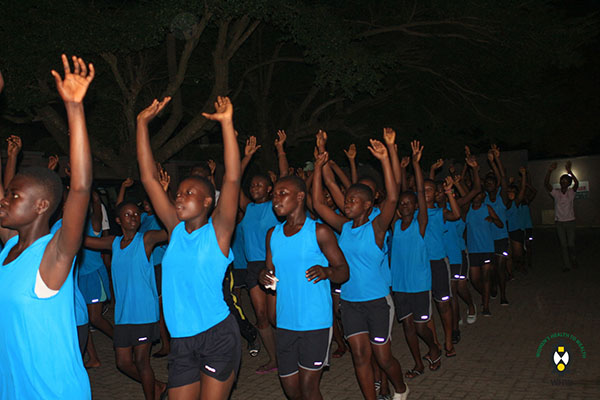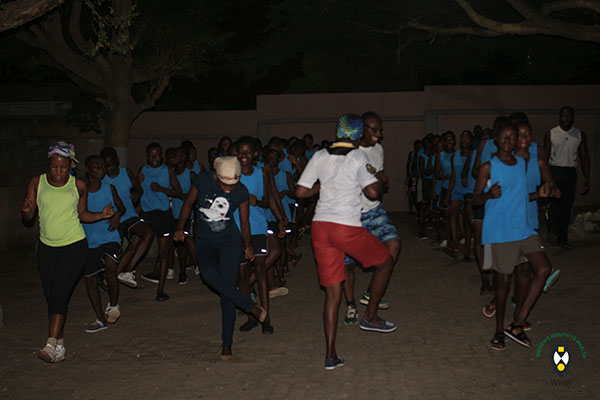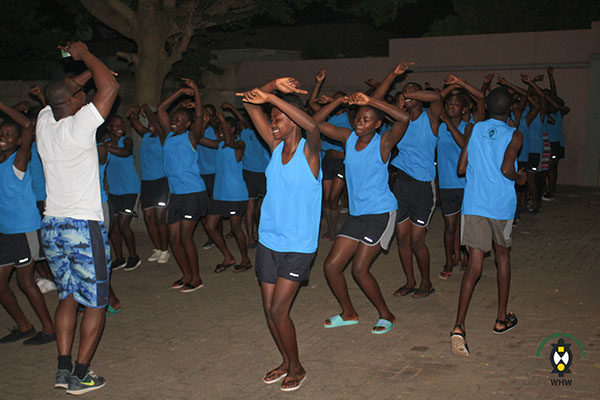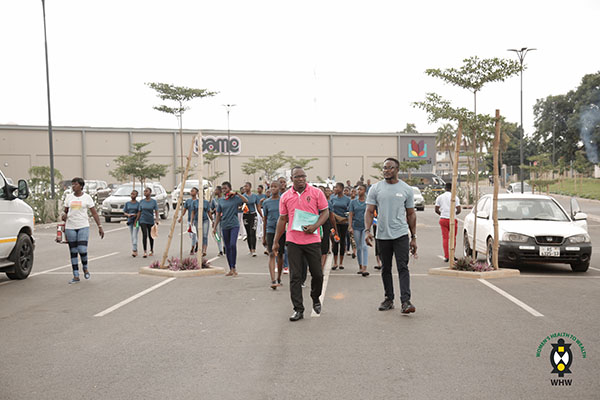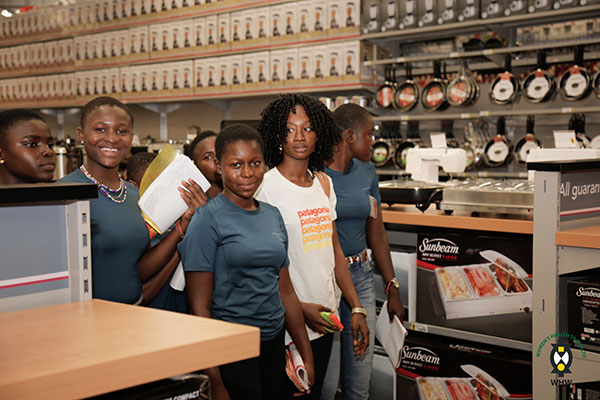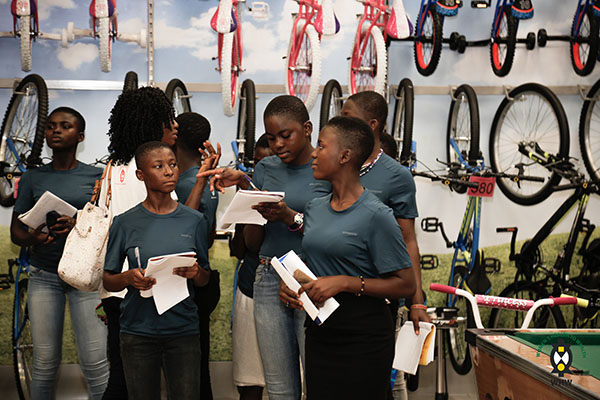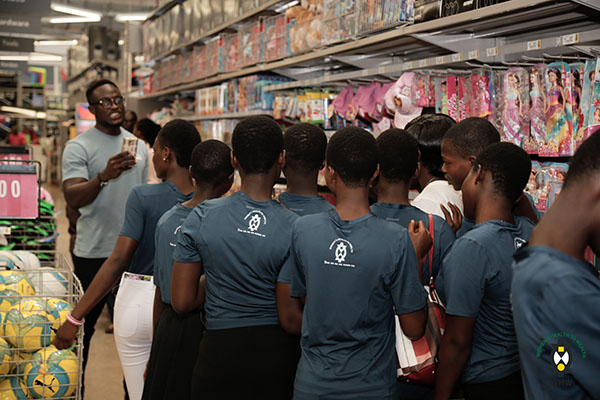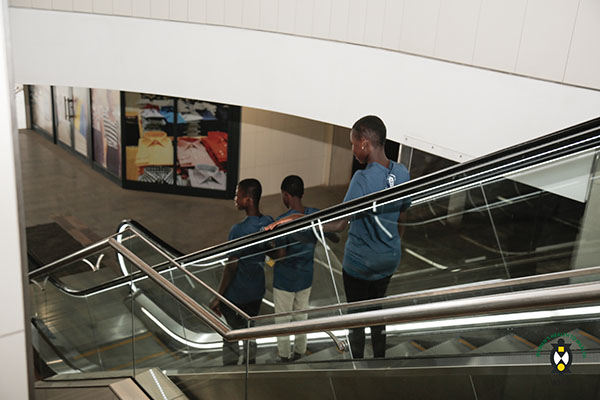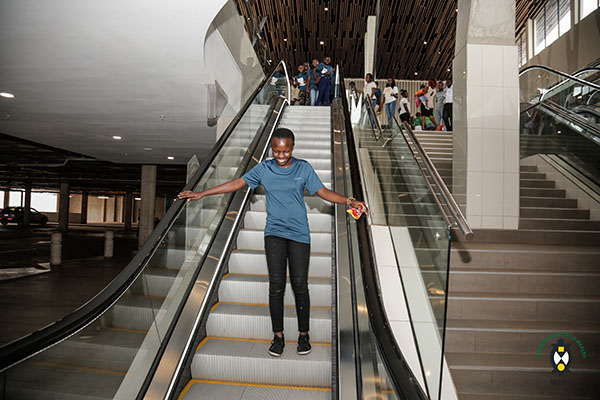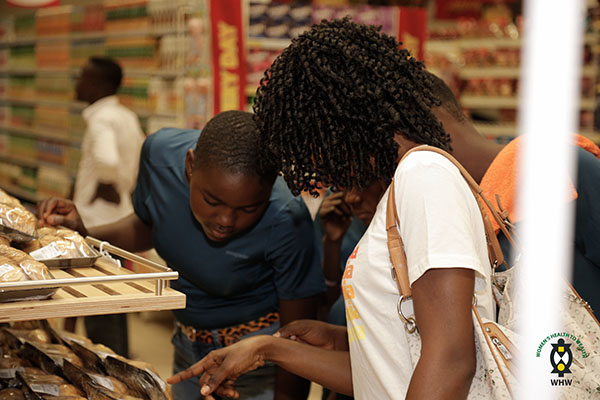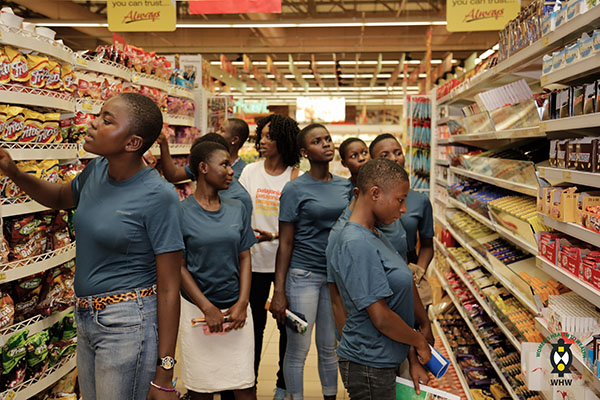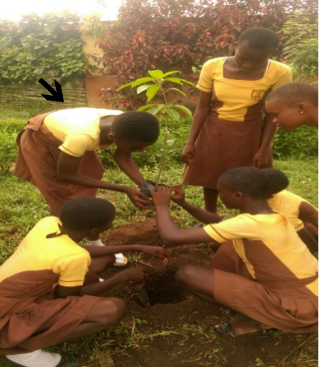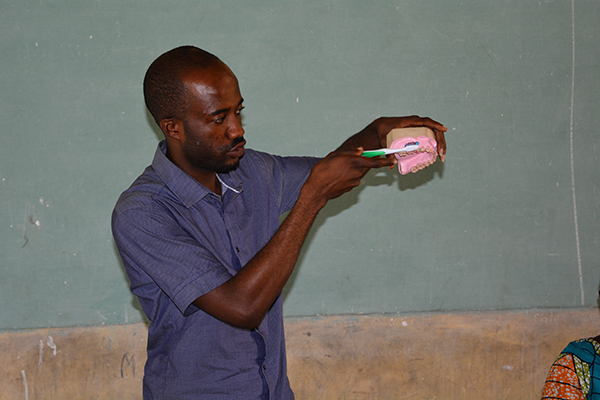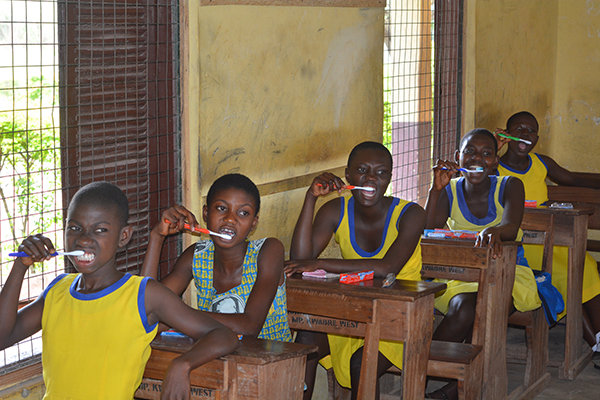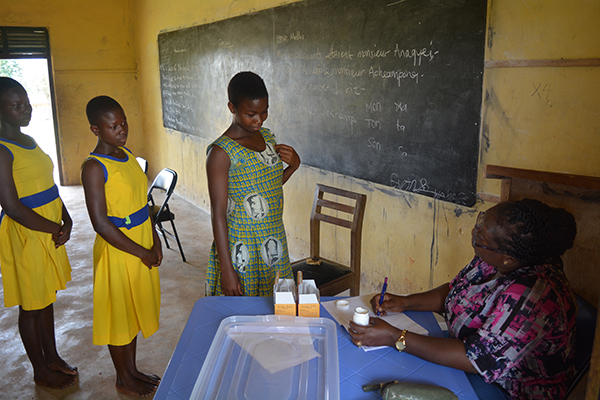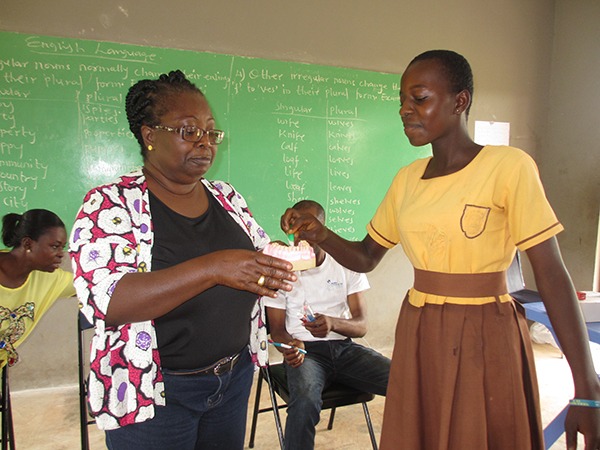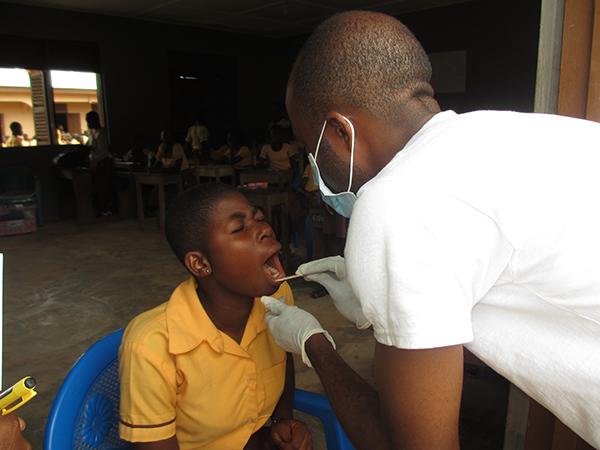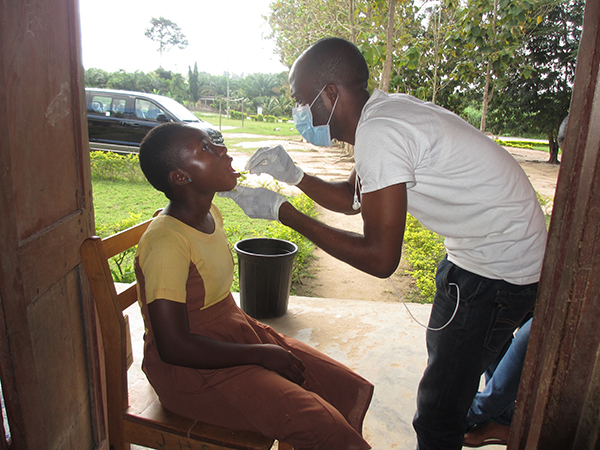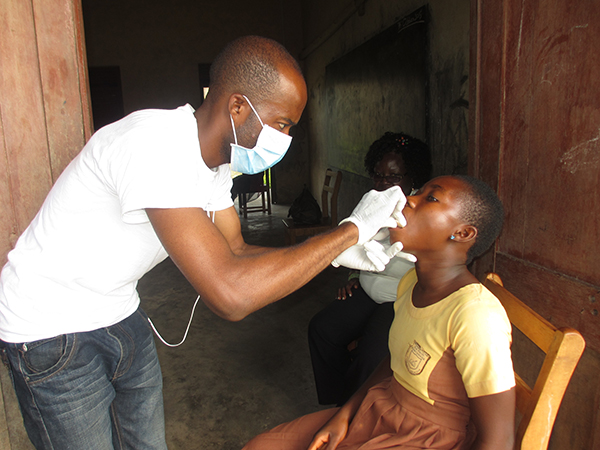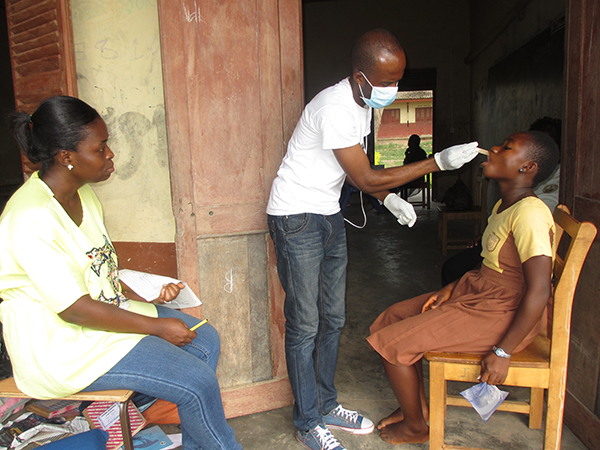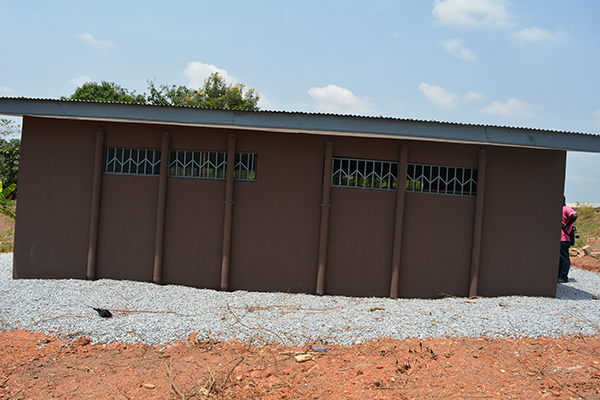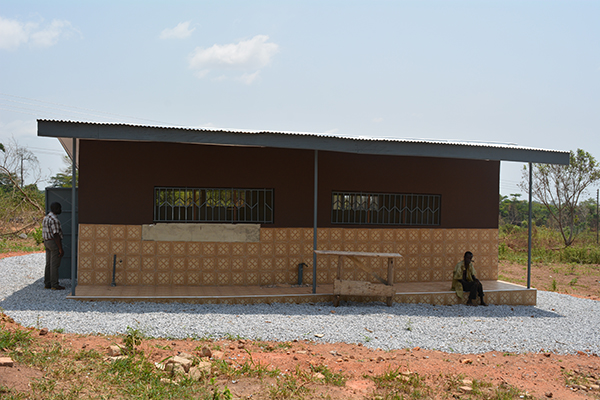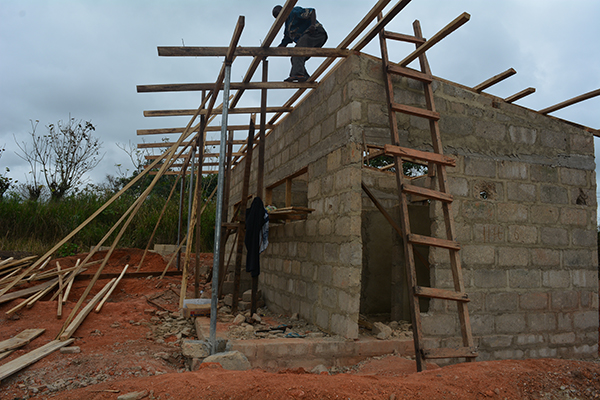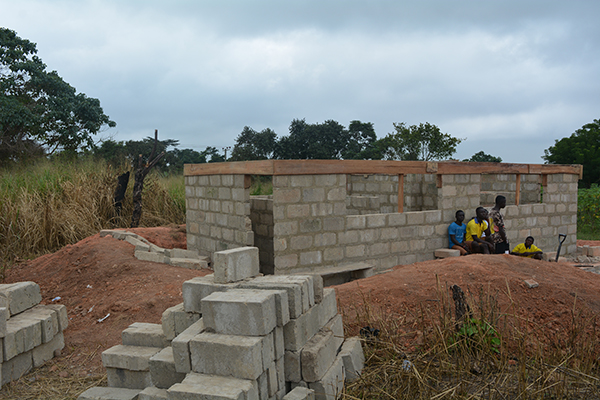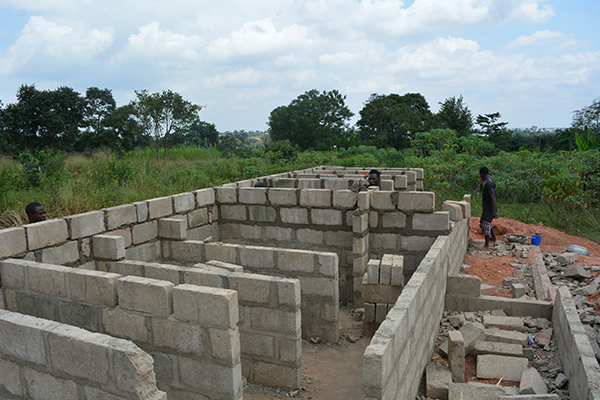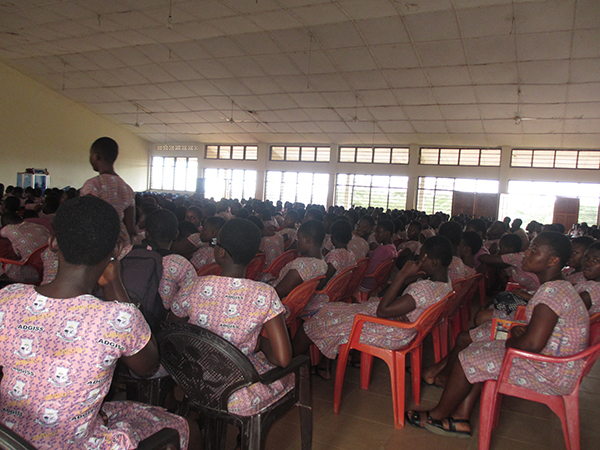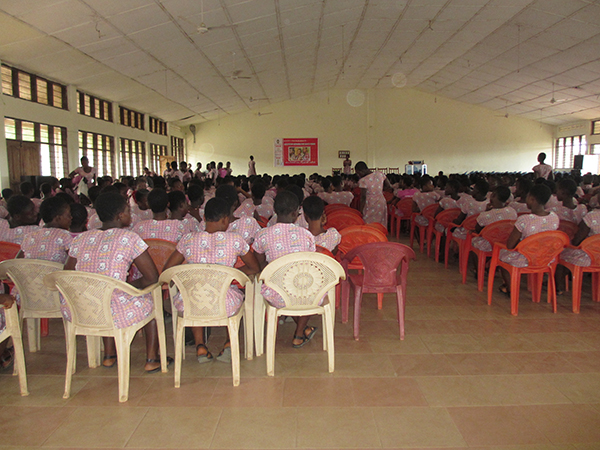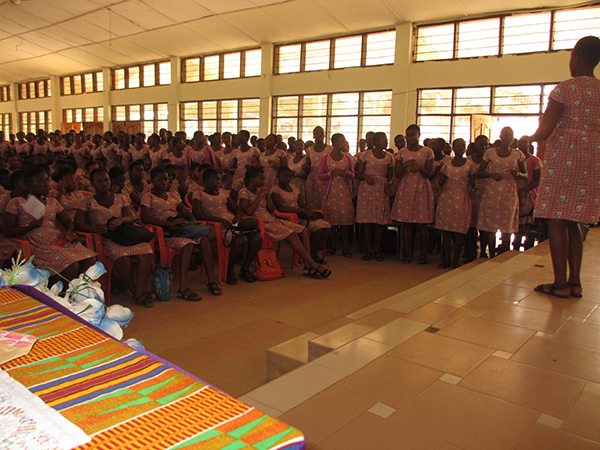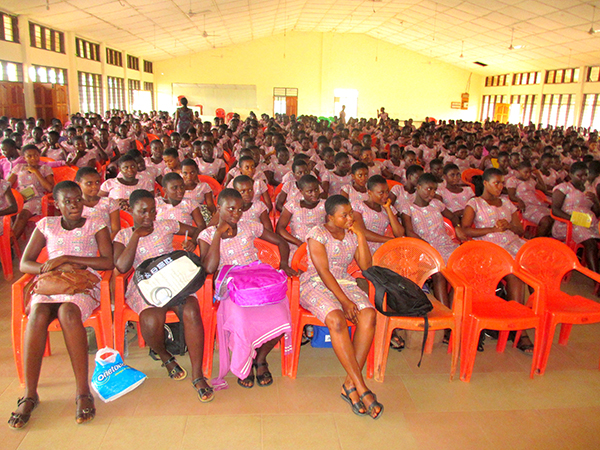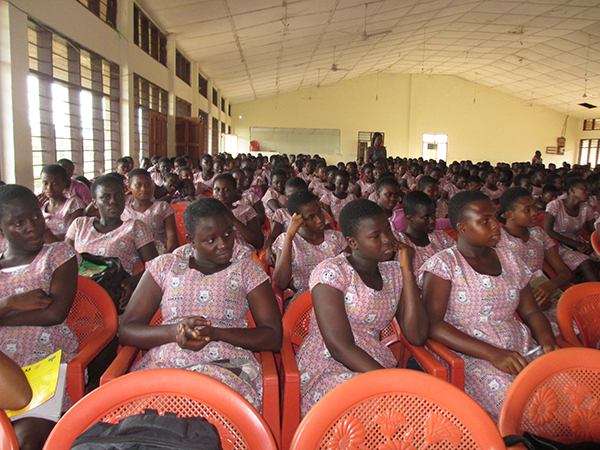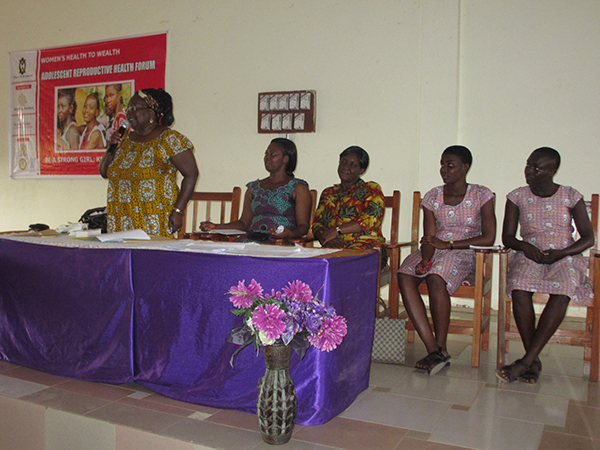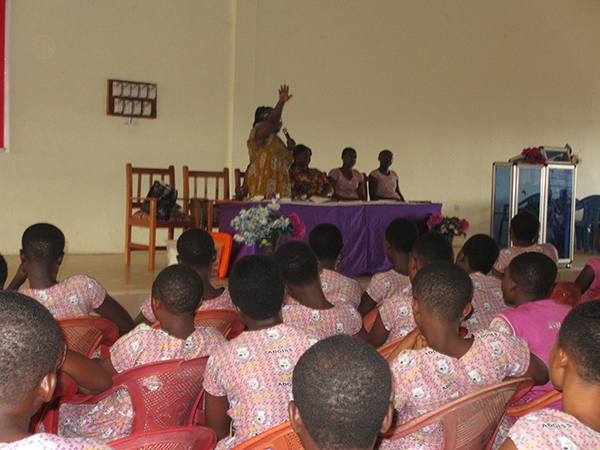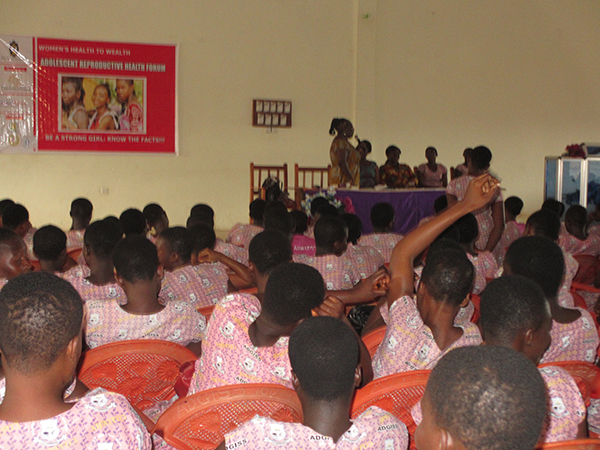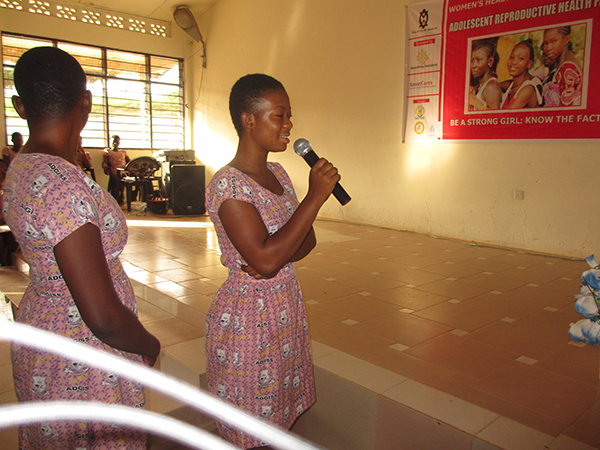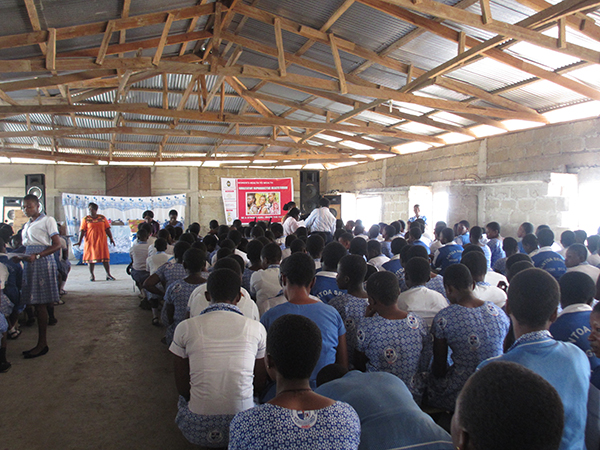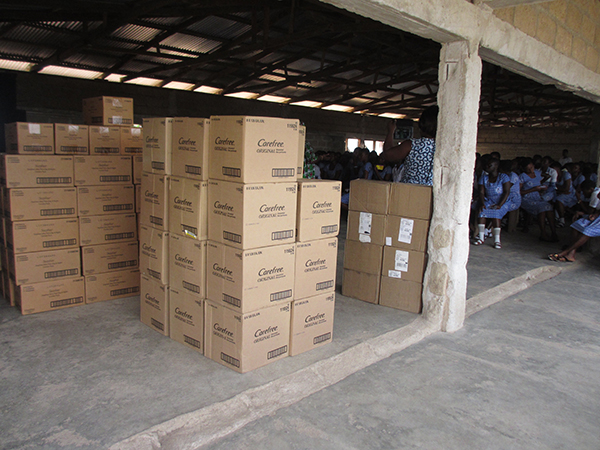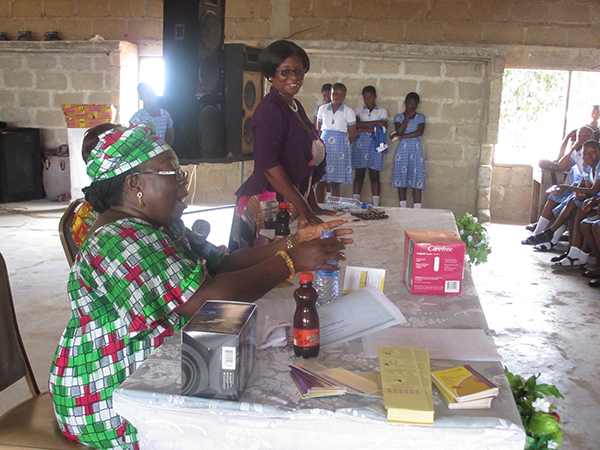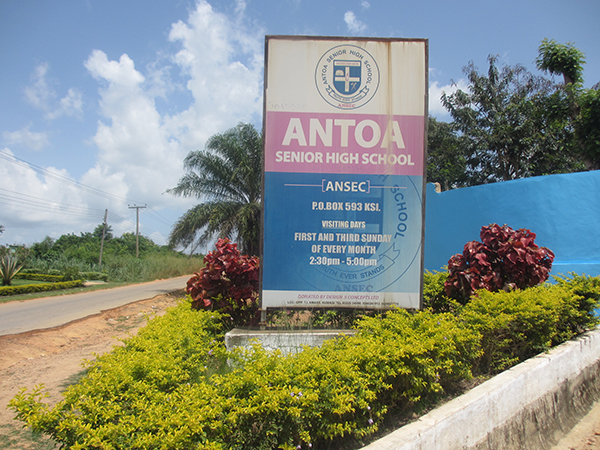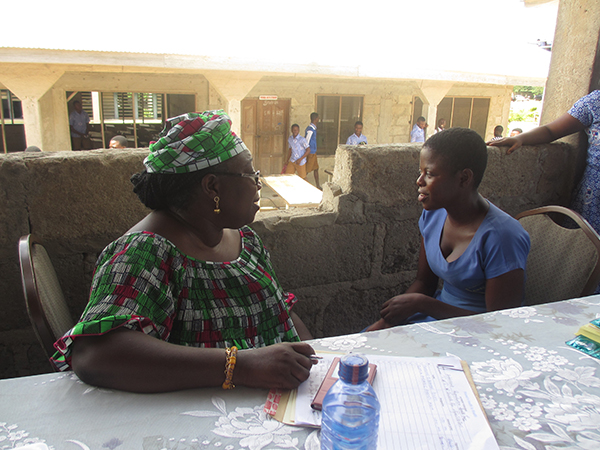Girls’ Leadership Camp 2017 In Pictures (Part I)
Keeping girls in school can sometimes be as simple as giving a girl a routine blood test, or as complex as rescuing a teenager from a violent home. In the impoverished urban settings where WomenStrong International works, we clearly see every day the direct link between health and education among the adolescent girls who are part of our Girls’ Clubs in Ghana, Haiti, India, and Kenya.
At Women’s Health to Wealth (WHW) in Kumasi, Ghana, a member of the WomenStrong Consortium, we run 34 Clubs in junior high schools where, in line with Ghana School Health Policy, School Health Education Program Coordinators liaise with the Ghana Health Service to educate adolescent girls on a variety of topics. Adolescent girls are taught about personal hygiene, dental health, nutrition, fitness, human sexuality, pregnancy prevention, and prevention of HIV and sexually transmitted infections (STIs). Girls also learn about the dangers of tobacco and drug use and about avoiding gender-based violence.
When WHW saw that neither Ghana’s Health Service nor Education Service were conducting health screenings, they began offering essential tests for visual, aural, and dental health, as well as testing for STIs and anemia. Hundreds of girls have been screened through the Clubs.
None of the girls had ever had a health screening before, and we received the full support of education and health staff at the district and local level, who understood the importance of basic health services for young girls but had been unable to offer them.
Testing revealed that more than half the girls between 14 and 16 years of age were moderately anemic.
The immediate impact of anemia is extreme fatigue and an inability to focus, both of which, obviously, impact a girl’s ability to study and learn. Longer term, if left untreated, anemia leads to difficult or dangerous pregnancies and low birthweight, sickly babies. Globally, anemia is the leading cause of maternal mortality. Most often, in poor settings, it is the result of not getting enough nutritious food to eat.
Not surprisingly, the screenings in Ghana found that one-third of the girls tested were malnourished, with a BMI of less than 18.5.
Girls receive the results of their screenings right away, and for those diagnosed as anemic, a 90-day course of treatment with iron-folate supplements is provided. After treatment, their blood is checked again. All girls in the Clubs are given folate supplements each school term.
In addition to treatment, we took on the root causes of anemia by offering nutrition education classes and the planting of kitchen gardens to help provide girls with one nutritious snack or meal each and every school day.
Girls needing additional care, such as the removal of a tooth or glasses, are given referral letters from WHW to school officials explaining what the girls need, so that the schools can work with parents to obtain medical care through doctors at district hospitals.
WHW’s own medical team working at the Girls’ Clubs includes a dentist and a dental assistant, an optometrist, an eye nurse and assistant, and two WHW staff members who conduct some tests and teach lessons in nutrition.
As a result of the health education and screenings done through WHW’s Girls’ Clubs, we have seen a 45% reduction in school absenteeism due to ill health. Teachers report that girls are more attentive and are eager participants in class activities. Fewer girls are reporting menstrual disorders, such as scanty blood flow and painful menses.
For high-school aged girls, WHW and WomenStrong offer adolescent reproductive health fora, held each year to address such topics as sexual reproduction, STIs, unsafe abortions, menstruation, mental health, and contraception.
About 85% of the forum participants are well into their late teens and are sexually active. As many as 18% have given birth to at least one child, in fact, while 37% have terminated at least one pregnancy. We have seen that reducing unwanted pregnancies means making more and better information available on contraception. The Adolescent Reproductive Fora are designed to fill this information gap, all within the context of the importance of staying in school.
Our meetings are held in safe spaces where girls hear from speakers from the health ministry, interspersed with skits and other tactics designed to create a relaxed environment where girls feel comfortable expressing their fears and asking their questions. Girls participating in the fora benefit from one-on-one counseling with adults who can answer their most pressing sexual health questions. In these individual sessions, counselors hear from frightened girls who are pregnant or carrying an STI, such as Candidiasis and Trichomoniasis. Treatment is provided on the spot.
The private sessions also have helped identify girls in abusive relationships. Over the last two years, WHW has rescued nearly a dozen girls from abuse, including girls facing violence at the hands of close relatives, and even one girl who was selling sex in a desperate effort to earn enough money to pay her high school fees.
WHW partners with Marie Stopes International, to provide sexually active girls with condoms or longer-term contraceptive options, as well as support if they find they are pregnant.
Not all those referred to Marie Stopes are in trouble; indeed, some are leaders. At the end of each year’s reproductive health forum, about 10 -15 girls volunteer to become trained Peer Educators. The Peer Educators are given hotlines to WHW’s Health Coordinator, as well as the Youth Coordinator at Marie Stopes, and are taught to give the phone numbers to any of their high school peers who may need help.
Above all, the collaboration between WomenStrong and WHW means that hundreds of girls are able to remove many of the health-related obstacles to finishing school, so that they have a real chance for a better life and a better, healthier future for their children.
Girls Leadership Camp
WHW is organizing its first ever leadership camp for 56 girls and 11 facilitators drawn from 18 out of the 36 WHW Girls Clubs in schools in the Atwima Nwabiagya, Afigya Kwabre, Bosomtwe and Kwabre East districts of the Ashanti Region.
The seven day workshop starts on Monday August 7 and ends on Sunday August 13, 2017.
Topics to be covered include the following i) Vision and Goal setting, ii)The Principles of Leadership iii) Good Nutrition and Exercise, iv)Adolescent Sexual and Reproductive Health matters, v)Communication in Healthy Relationships vi)Financial literacy and the Social Capital Credits Programme vii) Gender and Human Rights and viii) A panel of Women in Unusual Jobs.
The girls will also visit second cycle institutions, the library and ICT centre at the Kwame Nkrumah University of Science and Technology, the Kumasi Airport and Kumasi Mall, the Palace Museum and a local hospital.
Speakers and facilitators for sessions include the Ashanti Regional Director of Gender Affairs and Mrs Philomena Frimpong the first female accomplished casket maker in Ghana.
The Women’s Health to Wealth (WHW) is an organisation committed to the health and education of girls in first and second cycle institutions within the Ashanti Region. To achieve this, Girls’ Club program was instituted. There are currently thirty-six (36) girls’ clubs in the Atwima Nwabiagya, Afigya Kwabre, Kwabre East and Bosomtwe Districts in the Ashanti Region. See appendix 1.
The program creates safe environment for girls to express themselves, improve their literacy skills, learn about their biological makeup and associated changes as well as good health practices. The program also has measures to provide support for club members whenever the need arises for their well-being.
In line with this objective, WHW came to the aid of a club member, Victoria Asamoah, from the Piase D/A Junior High in the Bosomtwe District. Victoria fell and broke her leg at the beginning of the 2016/2017 academic year but was not immediately taken to the hospital by her guardians. A Herbalist was contacted to help her. However, her condition deteriorated as a result of the lack of proper medical care.
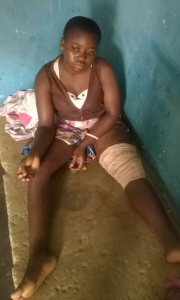
Facilitators of the club, Mavis Owusu Ansah and Matilda Animah upon investigations realised Victoria was being denied conventional medical care because of financial problems. They reported to the Executive Director of the WHW, Nana Abena Akuamoa Boateng for assistance. It should be noted that Victoria had by this time been kept at home for over a month. Nana Abena tasked a WHW program officer, Abraham Nkrumah, and the two facilitators to take her to the hospital.
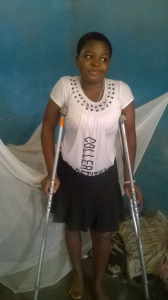
On the 28th October, 2016, Victoria was sent to the St. Michael’s hospital, Pramso in the Bosomtwe District. She was however referred to the Komfo Anokye teaching Hospital because the needed medical care at the time of her admission was beyond the capabilities of the District hospital WHW paid about five thousand Ghana Cedis (GH ₵ 5000) for her hospitalisation and medical bills.
Due to the due diligence of the club facilitators in attending to the welfare of club members and the timely intervention of the Executive director of the WHW, Victoria has been given the needed medical care and is now back on her feet.
Her legal guardian, also her brother appealed to the WHW for aid in paying her medical bills. This was subsequently done and Victoria went through a successful surgery in November, 2016.
Victoria Asamoah is now well and though she has not completed the therapy needed to regain the full use of her leg, is very grateful to the WHW and her facilitators for the love and commitment to her health. It is therefore expected that she can return to school when it reopens in January 2017 and continue her education.
Bare or Covered?
By Akosua Afriyie Boakye
This is an ambiguous phrase that calls to mind many scenarios; the good, bad and ugly…. making one wonder exactly what is meant or was meant by its user. In the case of Akua Blessing, a form one student of Amanchia District Authority Junior High School in the Atwima Nwabiagya district of the Ashanti region in Ghana, it concerned a pair of rubber sandals, a pair of torn leather sandals and her bare feet.
On the 27TH May, 2016 during delivery of orange seedlings to the WHW Girls Club, I saw that all club members as well as students of Amanchia D/A were neatly dressed in clean uniforms, white socks and sandals. One student stood out! She was dressed in a clean and well-ironed uniform, with her hair combed neatly BUT had no shoes. Class mates giggled and teased as they passed by her while others smiled and patted her arm or shoulder in sympathy.
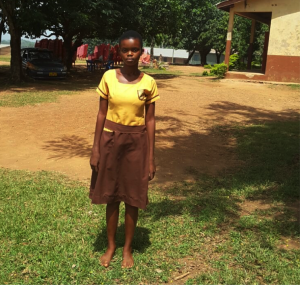
Upon enquiry, it was revealed that, Blessing had worn black flip flops locally referred to as Charlie Wote to school that morning, because her only pair of well-worn sandals had come apart the previous night before while cleaning it for school. However, it is against the school regulations to wear Charlie wote to school and the pair of flip flops had been seized in accordance with the school rule and poor Akua now had to go barefoot as she had no acceptable foot wear to put on even if she went back home.
Akua lost her Charlie wote and had to bear the shame and humiliation of walking barefoot on the rough stony compound and being tagged as a disobedient student.
Fortunately for Akua, WHW provided a new pair of approved sandals and so she did not have to go through the humiliation of walking barefoot for days, weeks or even months on end.
Food for thought
Knowing full well the implications of her actions that fateful morning as Akua set off to school, her desire for an education with a better future at all costs, made her do the unthinkable….
One cannot help but wonder,
- How many more Akua Blessings are in communities outside the operational areas of WHW?
- How long can these young ladies keep up with the taunts of their peers and community members for lack of one need or the other in seeking to make a better future for themselves and posterity through education?
[PHOTOS] ARHF at Adventist Girls SHS
Female literacy is one of the key interventions pursued by Women’s Health to Wealth (WHW) to help transform the lives of women and girls in our areas of operation in Ghana’s Ashanti region.
Currently, middle school (here, junior high) is the highest level of educational attainment for fully half of the girls in WHW’s area, which is centered in Ashanti’s capital city, Kumasi, and includes the surrounding periurban communities. This incomplete education adversely affects the girls’ potential earnings, as they end up with jobs that keep them trapped in the lowest wealth quintiles, thereby perpetuating the poverty cycle and its respective undesirable effects on the health of women and their eventual dependants.
As a strategy for promoting girls’ education up to senior high school, WHW decided to expand our Girls’ Clubs program from Kumasi schools to junior high schools in severely depressed communities in the seven districts bordering the city that have been noted for low enrollments of girls in both junior and senior high. The Clubs provide a safe place for girls to establish their identities and develop the emotional strength to interface successfully with their community.
At the invitation of the districts’ education teams, WHW started preparatory activities in March 2015 by holding meetings in those districts where we were already working to improve the health of the area’s many market women by offering health screenings at our regular mobile clinics. Our meetings concluded with the enthusiastic district teams’ selecting the communities and school facilitators who would participate in the program and determining specific timelines for training the facilitators and starting the programme.
Training of Facilitators: From May 19-21, 2015, WHW led a three-day residential training workshop for the 19 schools-based facilitators and three District Girl Child Coordinators that covered in some depth those issues adversely affecting girls’ education and ways to address them through the Girls’ Clubs.
The objectives of the training were as follows:
- To identify and explore factors adversely affecting the education of girls in our communities,
- To explore with facilitators some possible strategies to address the issues raised;
- To orient facilitators on WHW
- To review and train facilitators on the WHW Girls’ Club draft curriculum
- To finalise timelines for the start of Girls’ Clubs in their schools.
At the end of the workshop, the facilitators’ evaluations made clear that they felt strongly empowered by the training and were extremely eager to start the Clubs in their respective schools.
The facilitators then set about encouraging the Grade 7 girls in their schools to register for Club membership and decided to hold the first session during the week of June 8, 2015. In two communities, registration was opened up to girls in Grades 5 and 6, as WHW was told that these girls kept dropping out at grade 5, due to unintended pregnancies. It was hoped that, with a safe space to come to, together with other girls and facilitators, such pregnancies might be avoided, going forward.
Uses of Technology: During the three-day facilitators’ workshop, WHW staff helped them create Internet accounts on their smartphones. The “WhatsApp” application was used to develop a page that could facilitate communication between WHW and facilitators, as facilitators deemed this application as more user-friendly than getting on the Internet.
The WhatsApp page has greatly influenced communication and feedback between WHW and participating schools by reducing costs and speeding up information transfer between parties. Facilitators use the page mainly to report back to WHW on their weekly meetings, while WHW uses it to share information and to provide feedback to facilitators.
Next Steps: We anticipate a surge in membership in the existing Clubs at the start of the next academic season. However, we intend to keep the numbers no higher than 30 per Club, in order to give the facilitators enough time to spend with each girl.
WHW’s goal is to expand the Girls’ Clubs to six new junior high schools before the close of 2015.
Interested in continuing the conversation about Education?
- « Previous
- 1
- 2
- 3
- Next »


